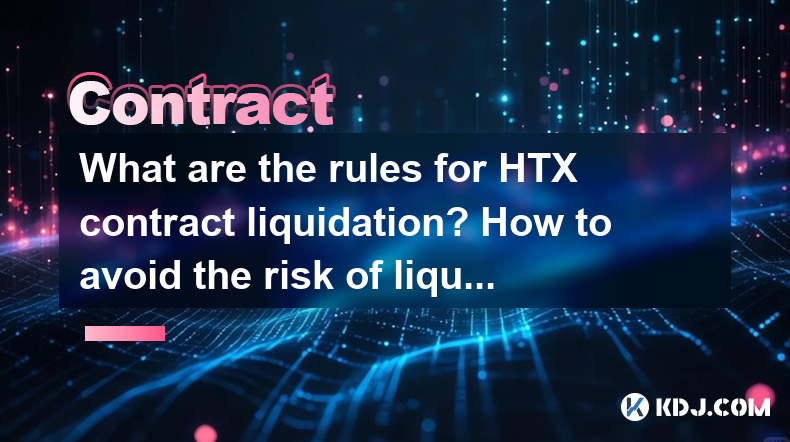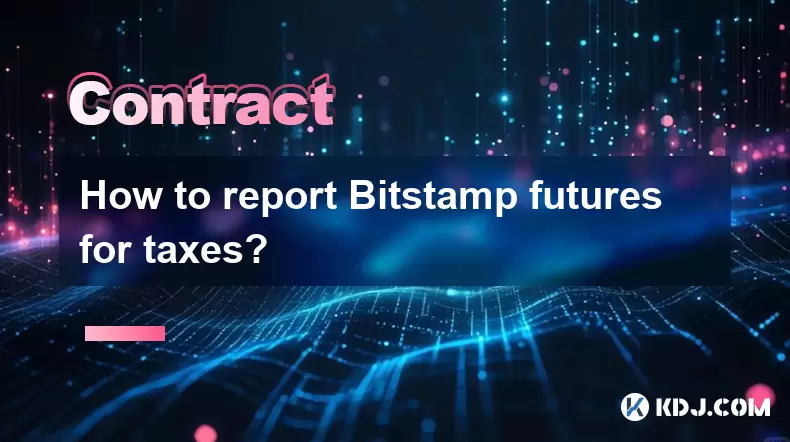-
 Bitcoin
Bitcoin $115000
1.10% -
 Ethereum
Ethereum $3719
2.93% -
 XRP
XRP $2.997
2.56% -
 Tether USDt
Tether USDt $1.000
0.02% -
 BNB
BNB $766.7
0.98% -
 Solana
Solana $169.6
3.97% -
 USDC
USDC $0.9999
0.00% -
 TRON
TRON $0.3391
1.82% -
 Dogecoin
Dogecoin $0.2060
3.53% -
 Cardano
Cardano $0.7429
2.91% -
 Hyperliquid
Hyperliquid $38.02
1.70% -
 Stellar
Stellar $0.4021
3.23% -
 Sui
Sui $3.515
3.31% -
 Bitcoin Cash
Bitcoin Cash $574.2
2.68% -
 Chainlink
Chainlink $16.85
3.10% -
 Hedera
Hedera $0.2461
1.54% -
 Ethena USDe
Ethena USDe $1.001
0.02% -
 Avalanche
Avalanche $22.28
1.26% -
 Litecoin
Litecoin $118.3
1.25% -
 UNUS SED LEO
UNUS SED LEO $8.923
-0.75% -
 Toncoin
Toncoin $3.255
2.35% -
 Shiba Inu
Shiba Inu $0.00001239
2.42% -
 Uniswap
Uniswap $9.834
3.77% -
 Polkadot
Polkadot $3.690
2.48% -
 Dai
Dai $1.000
0.02% -
 Monero
Monero $282.9
-3.30% -
 Bitget Token
Bitget Token $4.367
0.70% -
 Cronos
Cronos $0.1454
5.37% -
 Pepe
Pepe $0.00001055
3.60% -
 Ethena
Ethena $0.6156
8.72%
What are the rules for HTX contract liquidation? How to avoid the risk of liquidation?
HTX's contract liquidation protects traders and the platform from losses; understanding and using stop-loss orders, managing leverage, and diversifying positions can help avoid it.
May 01, 2025 at 05:07 pm

The HTX platform, a prominent cryptocurrency exchange, offers futures and margin trading services, where contract liquidation is a critical aspect that traders must understand to manage their risks effectively. Liquidation occurs when a trader's position is forcibly closed due to insufficient margin to cover potential losses. This article will delve into the rules governing HTX contract liquidation and provide strategies to avoid the risk of liquidation.
Understanding HTX Contract Liquidation
Liquidation on HTX is designed to protect both the trader and the platform from excessive losses. When a trader's position moves against them, and their margin level falls below a certain threshold, the platform initiates liquidation to close the position. The margin level is calculated as the ratio of the trader's equity to their used margin. HTX uses a maintenance margin requirement, which is the minimum margin level needed to keep a position open.
The specific threshold for liquidation varies depending on the type of contract and the leverage used. For example, if a trader uses 10x leverage, the maintenance margin might be set at 10%. If the trader's equity falls to 10% or below of the initial margin, liquidation is triggered.
Types of Liquidation on HTX
HTX employs two types of liquidation: partial liquidation and full liquidation. Partial liquidation occurs when only a portion of the trader's position is closed to bring the margin level back above the maintenance margin requirement. Full liquidation, on the other hand, closes the entire position when the margin level falls significantly below the threshold, often to prevent further losses.
Understanding which type of liquidation applies to your trading strategy is crucial. Partial liquidation can help preserve some of your position, while full liquidation might be more appropriate for high-risk, high-reward trades where you are prepared to lose the entire position.
Factors Influencing Liquidation
Several factors can influence the likelihood of liquidation on HTX. The most significant is market volatility. Rapid price movements can quickly erode a trader's margin, especially if they are using high leverage. Another factor is position size; larger positions require more margin, increasing the risk of liquidation.
Additionally, trading fees and funding rates can affect the margin level. Trading fees are charged on each transaction, reducing the trader's equity. Funding rates, applicable to perpetual futures, are periodic payments made between long and short positions to keep the contract price aligned with the underlying asset's price.
Strategies to Avoid Liquidation
To minimize the risk of liquidation, traders can employ several strategies. One effective approach is using stop-loss orders. A stop-loss order automatically closes a position when the price reaches a predetermined level, helping to limit losses. Setting a stop-loss at a level that ensures the margin remains above the maintenance margin can prevent liquidation.
Another strategy is managing leverage. High leverage can amplify both gains and losses. By using lower leverage, traders can maintain a higher margin level, reducing the risk of liquidation. For example, instead of using 100x leverage, a trader might opt for 10x or 20x, which provides a larger buffer against price movements.
Diversifying positions is also a useful tactic. Instead of concentrating all funds in a single position, traders can spread their risk across multiple assets or contracts. This diversification can help mitigate the impact of adverse price movements on any single position.
Monitoring and Adjusting Positions
Active monitoring of positions is essential to avoid liquidation. Traders should regularly check their margin levels and adjust their positions accordingly. If the margin level approaches the maintenance margin, traders can add more margin to their account to increase the equity and prevent liquidation.
Additionally, adjusting position sizes based on market conditions can help manage risk. In highly volatile markets, reducing position sizes can provide a larger margin buffer. Conversely, in stable markets, traders might increase their position sizes to capitalize on smaller price movements.
Using HTX Tools and Features
HTX offers several tools and features that can help traders manage their risk of liquidation. The risk management dashboard provides real-time data on margin levels, unrealized profits and losses, and other key metrics. Utilizing this dashboard can help traders make informed decisions about their positions.
Another useful feature is margin alerts. Traders can set up alerts to notify them when their margin level approaches the maintenance margin. These alerts can provide an early warning, allowing traders to take action before liquidation occurs.
Practical Steps to Avoid Liquidation
To implement these strategies effectively, traders should follow these practical steps:
- Set stop-loss orders: Determine a stop-loss level that keeps the margin above the maintenance margin. For example, if the maintenance margin is 10%, set the stop-loss at a price that ensures the margin remains above 10%.
- Adjust leverage: Calculate the appropriate leverage based on your risk tolerance and market conditions. Lower leverage provides a larger margin buffer.
- Diversify positions: Allocate funds across multiple assets or contracts to spread risk. For example, instead of putting all funds into Bitcoin futures, consider also trading Ethereum or other cryptocurrencies.
- Monitor positions: Regularly check the margin level and unrealized profits and losses. Use the HTX risk management dashboard to stay informed.
- Add margin: If the margin level approaches the maintenance margin, deposit additional funds to increase the equity and prevent liquidation.
- Adjust position sizes: Reduce position sizes in volatile markets and increase them in stable markets to manage risk effectively.
- Set margin alerts: Configure alerts to notify you when the margin level approaches the maintenance margin, allowing you to take action before liquidation occurs.
Frequently Asked Questions
Q: Can I avoid liquidation by closing my position manually before the margin level reaches the maintenance margin?
A: Yes, you can avoid liquidation by manually closing your position before the margin level falls to the maintenance margin. Regularly monitoring your positions and acting quickly when the margin level approaches the threshold can help you avoid forced liquidation.
Q: What happens to my funds if my position is liquidated?
A: If your position is liquidated, any remaining funds in your account after covering losses and fees will be available for withdrawal. However, if the losses exceed your account balance, you may owe additional funds to the platform.
Q: Does HTX charge any fees for liquidation?
A: Yes, HTX may charge a liquidation fee to cover the costs associated with closing your position. The specific fee amount can vary, so it's important to review the platform's fee schedule.
Q: Can I use a trailing stop-loss to avoid liquidation?
A: Yes, a trailing stop-loss can be an effective tool to avoid liquidation. A trailing stop-loss adjusts automatically as the price moves in your favor, helping to lock in profits while still providing protection against adverse price movements.
Disclaimer:info@kdj.com
The information provided is not trading advice. kdj.com does not assume any responsibility for any investments made based on the information provided in this article. Cryptocurrencies are highly volatile and it is highly recommended that you invest with caution after thorough research!
If you believe that the content used on this website infringes your copyright, please contact us immediately (info@kdj.com) and we will delete it promptly.
- IREN Overtakes: A New King in the Bitcoin Miner Hashrate Race?
- 2025-08-07 16:31:29
- Memecoins Mania: Whales Eye Pepe Dollar (PEPD) as Bonk Cools Off, While MoonBull Hogs the Spotlight!
- 2025-08-07 16:51:17
- Unilabs, PEPE, and Investment Risk: Navigating the Crypto Hype
- 2025-08-07 16:31:29
- Meme Coin Mania: Rug Pulls, CZ-Inspired Tokens, and the Wild West of Crypto
- 2025-08-07 16:57:14
- HashFlare Founders Face the Music: Jail Time Looms?
- 2025-08-07 14:30:12
- Pepeto's Pounce: Meme Coin Mania Meets Blockchain Infrastructure
- 2025-08-07 15:10:12
Related knowledge

Why is my Bitstamp futures position being liquidated?
Jul 23,2025 at 11:08am
Understanding Futures Liquidation on BitstampFutures trading on Bitstamp involves borrowing funds to open leveraged positions, which amplifies both po...

How to report Bitstamp futures for taxes?
Jul 30,2025 at 08:35am
Understanding Bitstamp Futures and Taxable EventsWhen trading Bitstamp futures, it’s essential to recognize that these financial instruments are treat...

Does Bitstamp offer inverse contracts?
Jul 23,2025 at 01:28pm
Understanding Inverse Contracts in Cryptocurrency TradingIn the realm of cryptocurrency derivatives, inverse contracts are a specific type of futures ...

What is the difference between futures and perpetuals on Bitstamp?
Jul 27,2025 at 05:08am
Understanding Futures Contracts on BitstampFutures contracts on Bitstamp are financial derivatives that allow traders to speculate on the future price...

How to find your Bitstamp futures trade history?
Jul 23,2025 at 08:07am
Understanding Bitstamp and Futures Trading AvailabilityAs of the current state of Bitstamp’s service offerings, it is critical to clarify that Bitstam...

Can I use a trailing stop on Bitstamp futures?
Jul 23,2025 at 01:42pm
Understanding Trailing Stops in Cryptocurrency TradingA trailing stop is a dynamic type of stop-loss order that adjusts automatically as the price of ...

Why is my Bitstamp futures position being liquidated?
Jul 23,2025 at 11:08am
Understanding Futures Liquidation on BitstampFutures trading on Bitstamp involves borrowing funds to open leveraged positions, which amplifies both po...

How to report Bitstamp futures for taxes?
Jul 30,2025 at 08:35am
Understanding Bitstamp Futures and Taxable EventsWhen trading Bitstamp futures, it’s essential to recognize that these financial instruments are treat...

Does Bitstamp offer inverse contracts?
Jul 23,2025 at 01:28pm
Understanding Inverse Contracts in Cryptocurrency TradingIn the realm of cryptocurrency derivatives, inverse contracts are a specific type of futures ...

What is the difference between futures and perpetuals on Bitstamp?
Jul 27,2025 at 05:08am
Understanding Futures Contracts on BitstampFutures contracts on Bitstamp are financial derivatives that allow traders to speculate on the future price...

How to find your Bitstamp futures trade history?
Jul 23,2025 at 08:07am
Understanding Bitstamp and Futures Trading AvailabilityAs of the current state of Bitstamp’s service offerings, it is critical to clarify that Bitstam...

Can I use a trailing stop on Bitstamp futures?
Jul 23,2025 at 01:42pm
Understanding Trailing Stops in Cryptocurrency TradingA trailing stop is a dynamic type of stop-loss order that adjusts automatically as the price of ...
See all articles

























































































